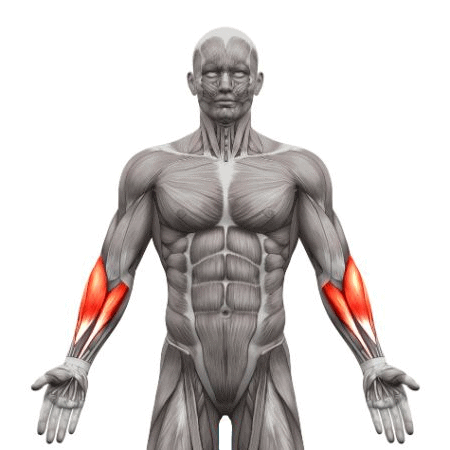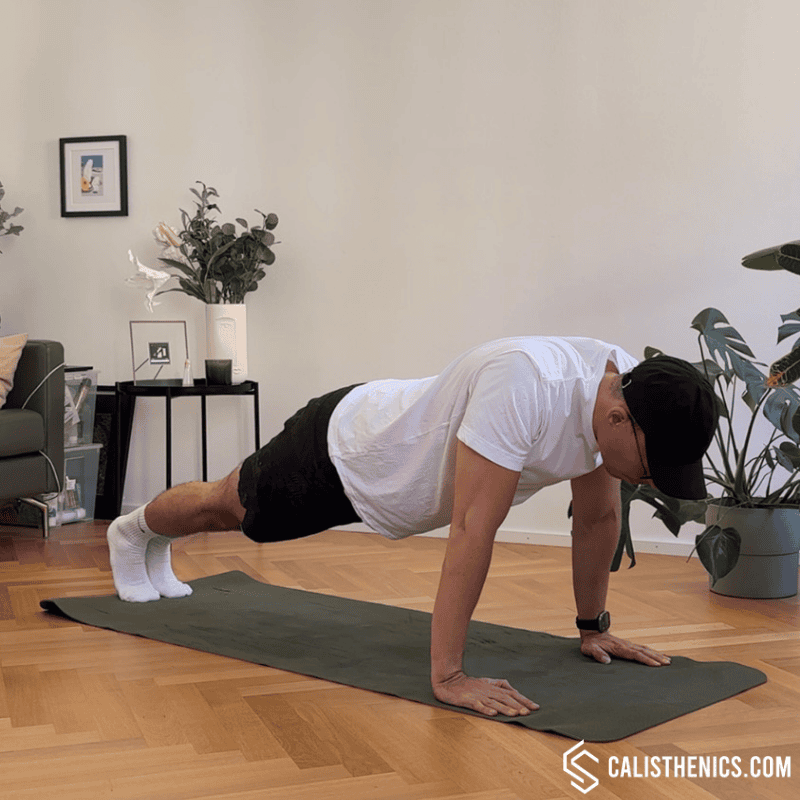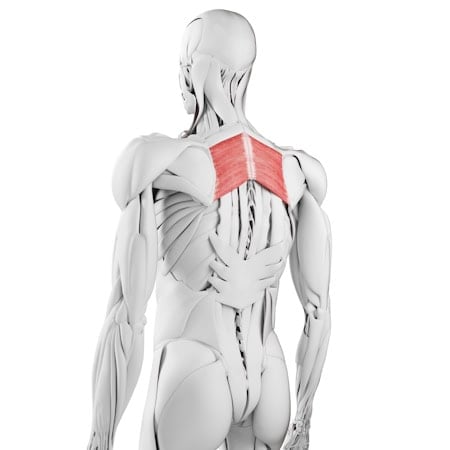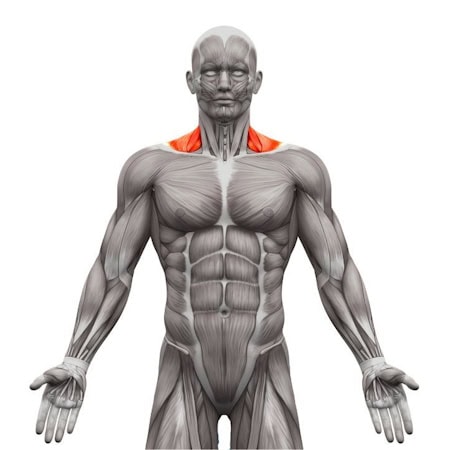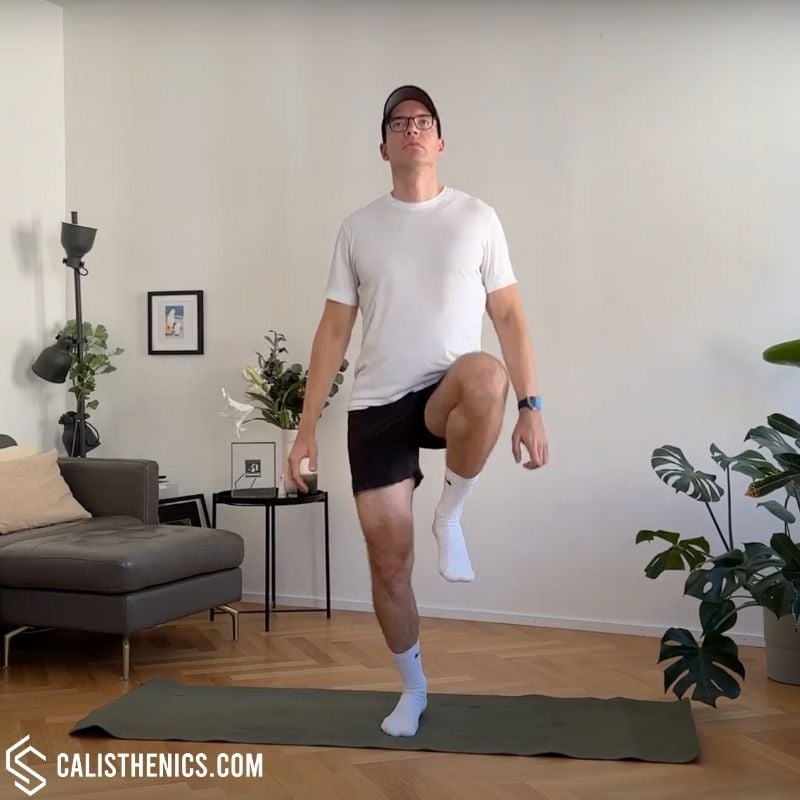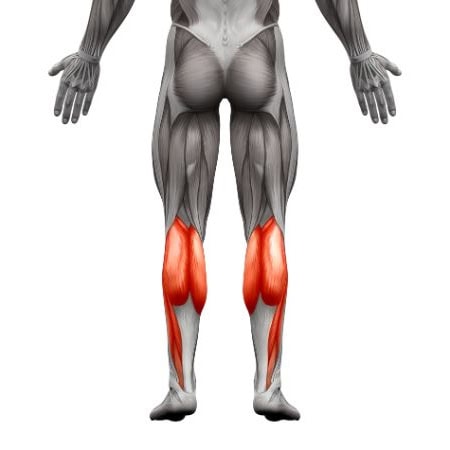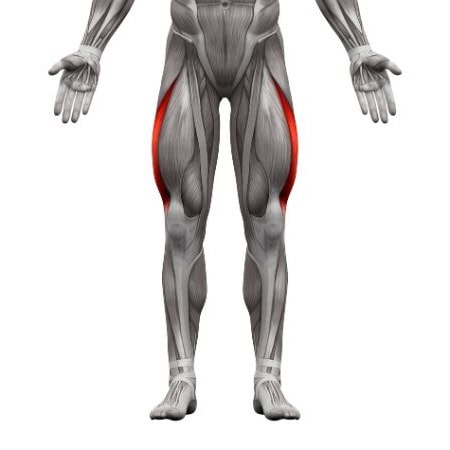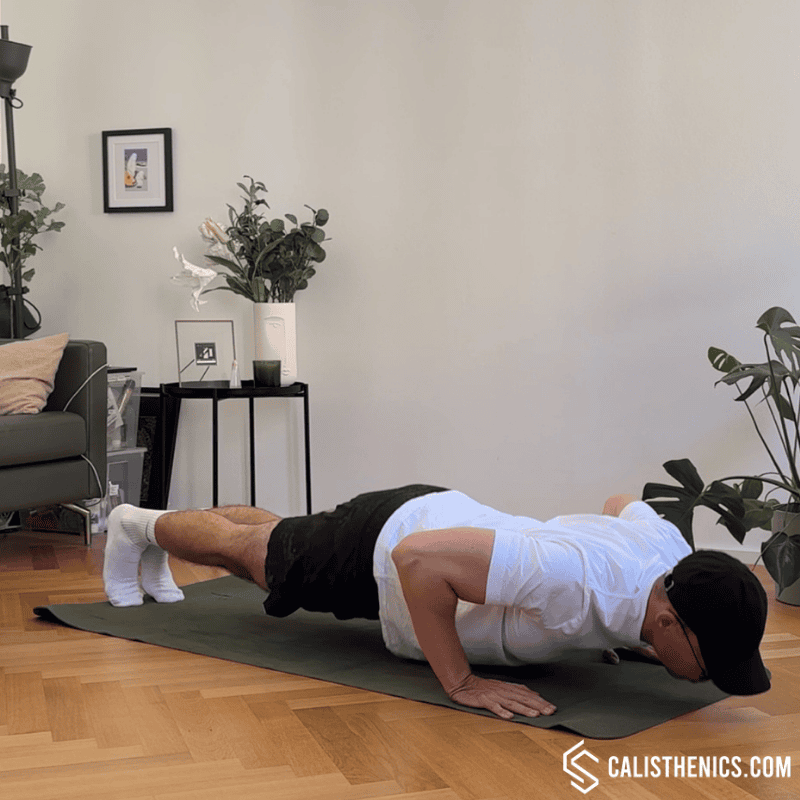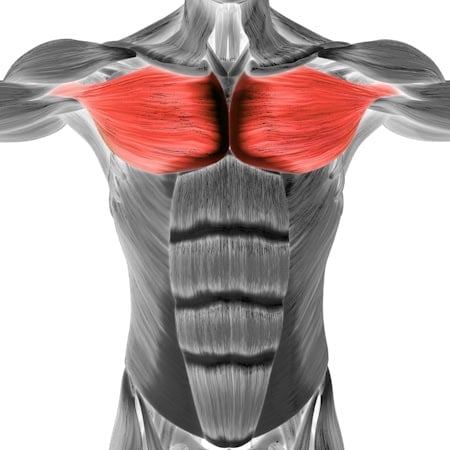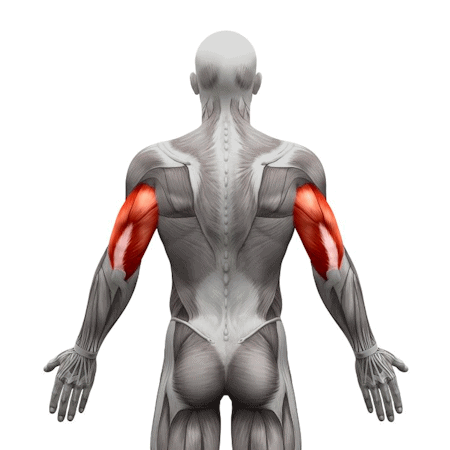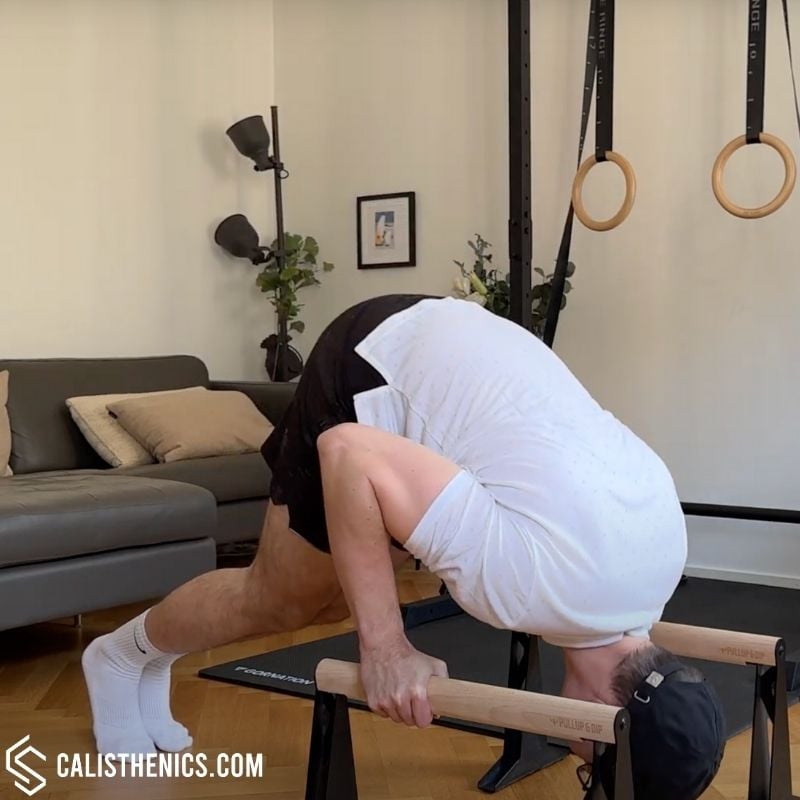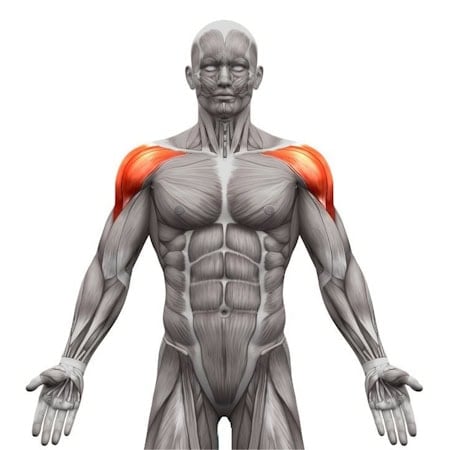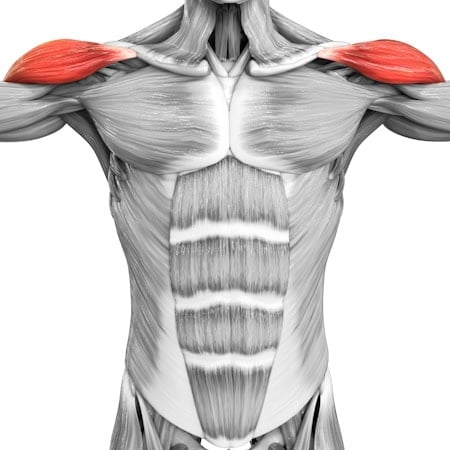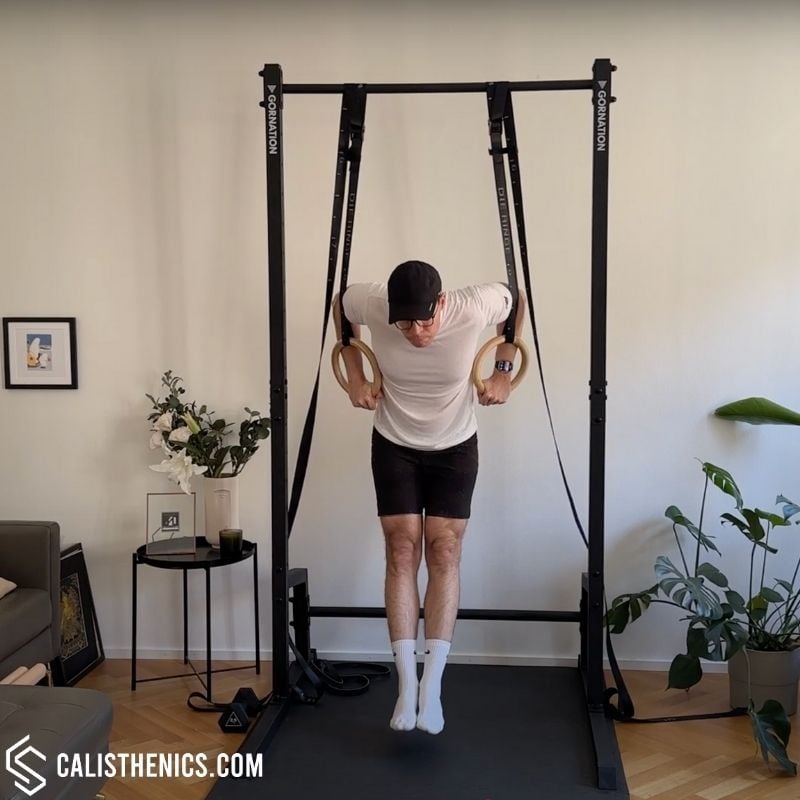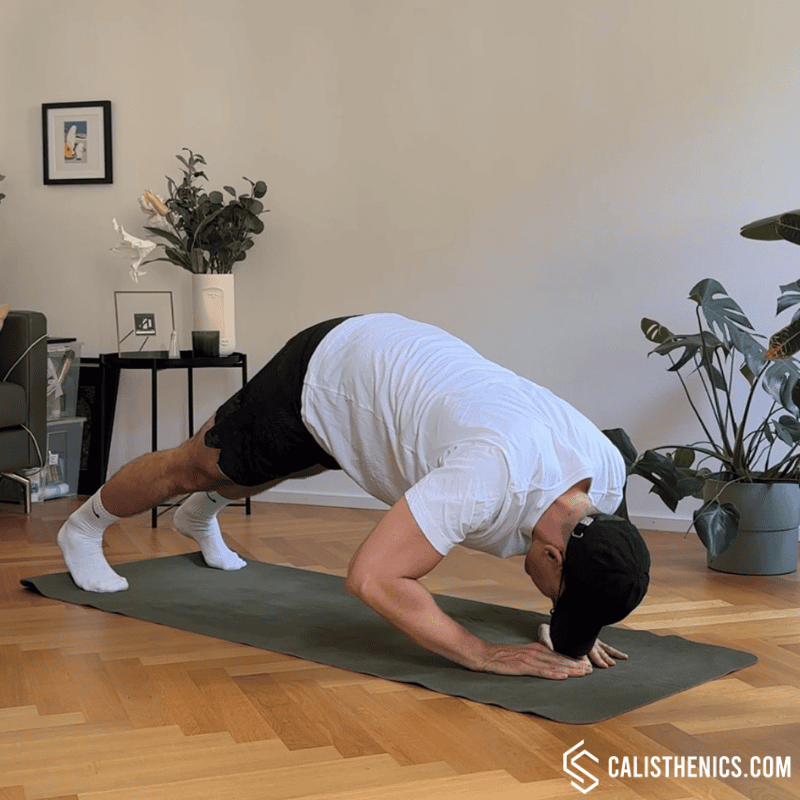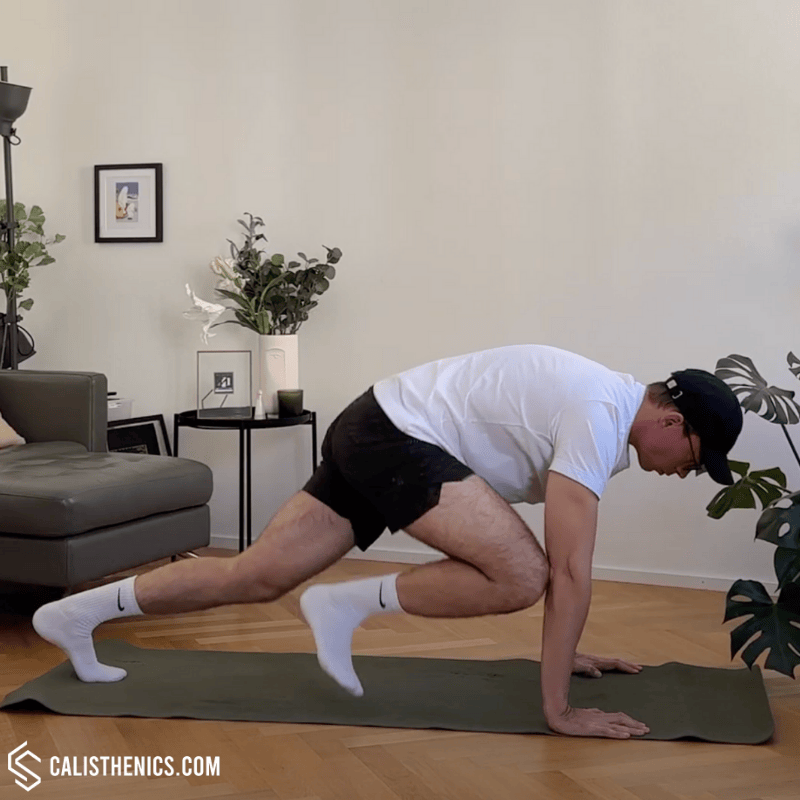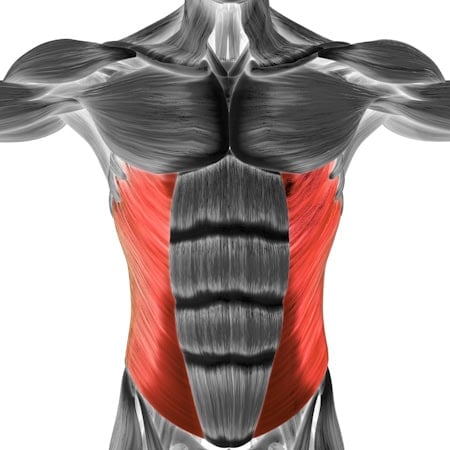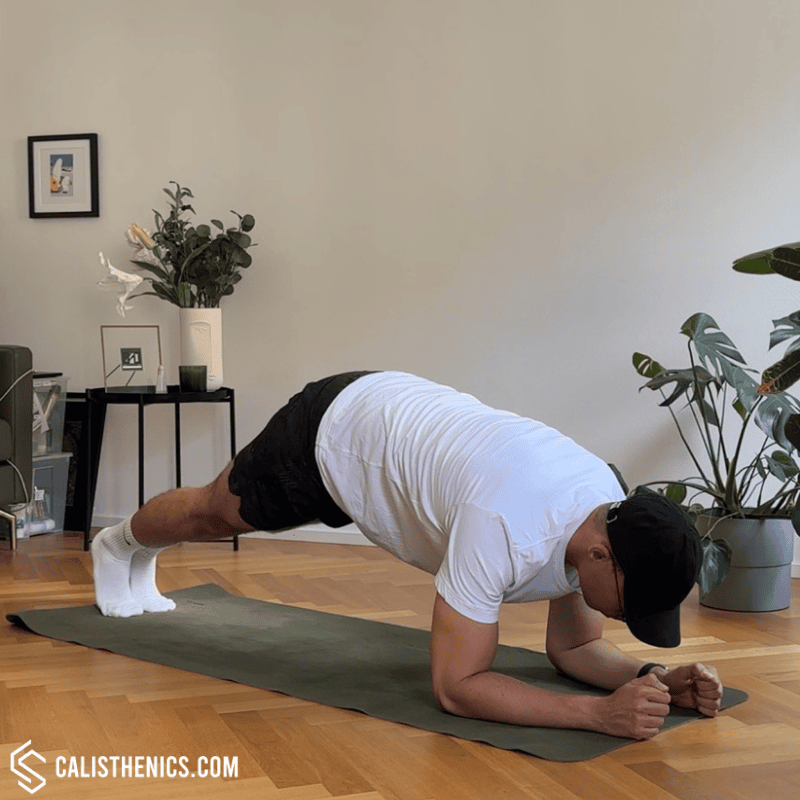Push 17: Full Chest and Triceps Workout with Core AMRAP Finisher
🎯 Workout Description:
This session is all about control. Negative dips teach you how to lower yourself through the full dip range safely. Combined with stronger push-up variants and a triceps burner, this workout builds the strength and joint awareness you’ll need for clean dips.
👤 Who It’s For:
Athletes who are comfortable with band-assisted dips and dip support holds, ready to focus on eccentric control.
🧰 Equipment Needed:
Warm-Up
Goal: Prep the shoulders, wrists, and scapulae for eccentric control.
Format:
-
Wrist warm-up routine – 1 round
-
2 rounds (superset format):
-
10 Scapula Push-Ups
-
6 High Knees (each leg)
-

Muscle group:
Tips
-
Perform this routine before every handstand or push workout.
-
Use a soft mat or towel if your wrists are sensitive to hard surfaces.
-
Pair with scapular and shoulder prep for a complete upper-body warm-up.
-
Spread your fingers during each drill to distribute load.
-
Gradually increase range and pressure over weeks, not in one session.
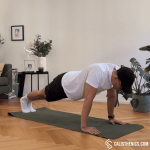
Tips
-
Focus on Shoulder Blade Movement: The goal of this exercise is to isolate the movement of the scapula. Ensure your elbows remain locked and focus on squeezing and spreading your shoulder blades.
-
Core Engagement: Keep your core and glutes engaged to maintain proper body alignment and avoid unwanted movement in the hips or lower back.
-
Controlled Movements: Perform the exercise slowly and with control to fully engage the muscles of the shoulder girdle and prevent injury.
-
Breathing: Inhale as you retract your scapula (lowering your chest) and exhale as you protract your scapula (pushing through your hands and rounding your back).
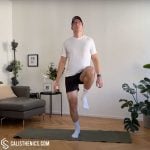
Tips
-
Keep your core tight to stabilize your spine and prevent over-rotation.
-
Pump your arms naturally—elbows bent and driving in sync with your legs.
-
Look straight ahead rather than down to keep posture aligned.
-
Use a metronome or playlist with a steady beat to maintain tempo.
-
Start slow to warm up and ramp up intensity gradually.
-
Train barefoot or in minimalist shoes (on soft flooring) to improve foot strength and awareness.
Strength
Goal: Build vertical pushing strength by controlling the descent of the dip and reinforcing full pushing capacity.
Structure:
-
Superset A (3 rounds): A1 + A2, rest 90 sec
-
Set B (2 rounds): Dip progression
-
Set C (1 round): Triceps finisher
→ Rest 60–90 sec between all rounds
🟦 Superset A:
-
A1: Slow Motion Push-Ups (5 sec down, 1 sec hold, fast up) – 6–8 reps
-
A2: Pike Push-Ups – 6 reps
🟩 Set B:
-
Negative Dips (Rings or Dip Bars) – 2 sets of 3–5 reps (3–5 sec lower)
🟨 Set C:
-
Diamond Face Push-Ups – 8–10 reps
Focus on technique in every rep. In negative dips, control the entire descent—don’t drop fast at the bottom.
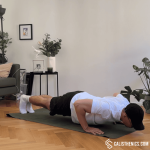
Tips
-
Body Alignment: Keep your body in a straight line from head to heels. Engage your core and glutes to prevent your hips from dropping or rising.
-
Hand Placement: Your hands should be positioned just outside of shoulder-width for optimal stability. Moving them closer or wider will target different muscles.
-
Elbow Positioning: Keep your elbows at about a 45-degree angle from your body, not flaring out too far to avoid shoulder strain.
-
Breathing: Inhale as you lower yourself, and exhale as you push back up. Controlled breathing improves strength and endurance.
-
Controlled Movements: Lower yourself slowly to build strength, then push back up with a smooth, steady motion.
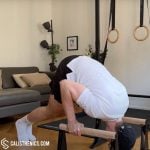
Muscle groups:
Tips
-
Focus on the Tripod Position: Always ensure the head lowers between the hands to form the correct triangle shape.
-
Keep Hips High: The higher the hips, the more vertical the pressing angle, making the exercise more effective.
-
Press the Head Through at the Top: This ensures full range of motion and activates the shoulders completely.
-
Engage Your Core: Keep the abs tight to prevent an excessive arch in the lower back.
-
Use a Slow, Controlled Tempo: Aim for a 3-4 second descent and a strong, controlled press back up.
-
Gradually Increase Range of Motion: Start with shallow reps if necessary and work towards a full deep push-up.
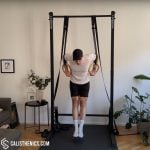
Muscle group:
Tips
-
Aim for a 3-5 second descent per repetition for maximum strength gains.
-
Maintain external rotation of the rings (slight outward turn) to protect the shoulders.
-
Focus on quality over quantity—4-6 well-controlled reps are better than 10 rushed ones.
-
Keep the core tight and legs slightly in front to prevent excessive swinging.
-
If full range of motion is difficult, use foot assistance or perform partial negatives before progressing.
-
Gradually work toward slower descents as you gain strength.
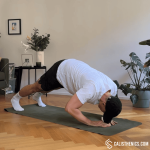
Muscle groups:
Tips
-
Focus on Elbow Positioning: Keep your elbows close to your body during the movement to target the triceps more effectively and reduce strain on the shoulders.
-
Start with a Slight Angle: If you’re new to diamond face push-ups, start with a slight forward angle, gradually increasing the difficulty as you build strength.
-
Control the Descent: Perform the lowering phase slowly and with control to maximize muscle engagement in the triceps and shoulders.
-
Breathing: Inhale as you lower your face toward your hands, and exhale as you push back up. Proper breathing will help you maintain stability and power.
HIIT Core Finisher
Format: 10-minute AMRAP (As Many Rounds As Possible)
-
10 Mountain Climbers
-
30 sec Elbow Plank Hold
→ Aim for 5–6 controlled rounds with perfect core bracing.
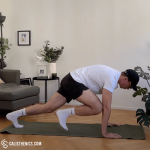
Tips
-
Core Engagement: Focus on keeping your core engaged throughout the exercise to prevent your hips from rising or sagging.
-
Controlled Breathing: Breathe steadily as you alternate legs. Exhale as you drive each knee forward, and inhale as you extend each leg back.
-
Keep the Hips Level: Avoid letting your hips move up or down too much; maintain a level position to keep the focus on your core.
-
Controlled Speed: Start with a slow, controlled pace to ensure proper form, then gradually increase your speed as you feel more stable.
-
Hand and Shoulder Alignment: Keep your hands directly under your shoulders to ensure proper alignment and avoid putting excess strain on your wrists.

Tips
-
Straight Body Line: Ensure your body forms a straight line from your head to your heels. Avoid raising or lowering your hips too much, as this can compromise form.
-
Core Engagement: Keep your core muscles tight throughout the entire exercise. This helps stabilize your spine and prevents your hips from sagging or arching.
-
Elbow Positioning: Your elbows should be directly under your shoulders, creating a strong base of support. This will also help engage your shoulders and reduce strain.
-
Steady Breathing: Focus on controlled, deep breaths. Inhale through your nose and exhale through your mouth, which helps stabilize your core and manage endurance.
-
Avoid Tension in the Neck: Keep your neck neutral by looking down at the floor to prevent any tension or strain in the neck.


